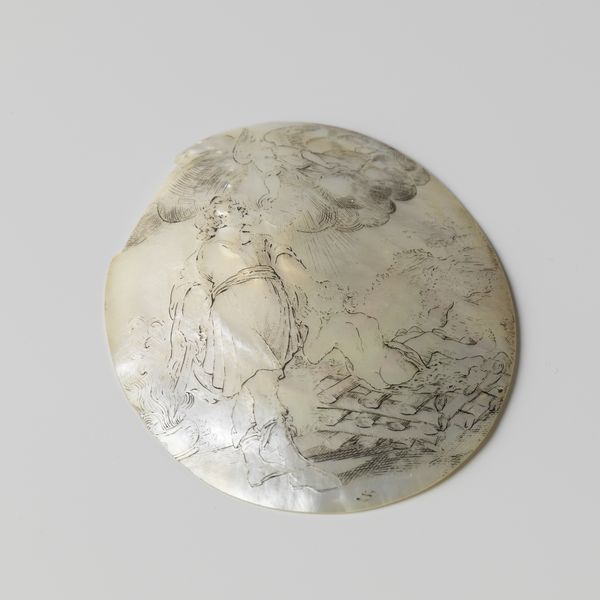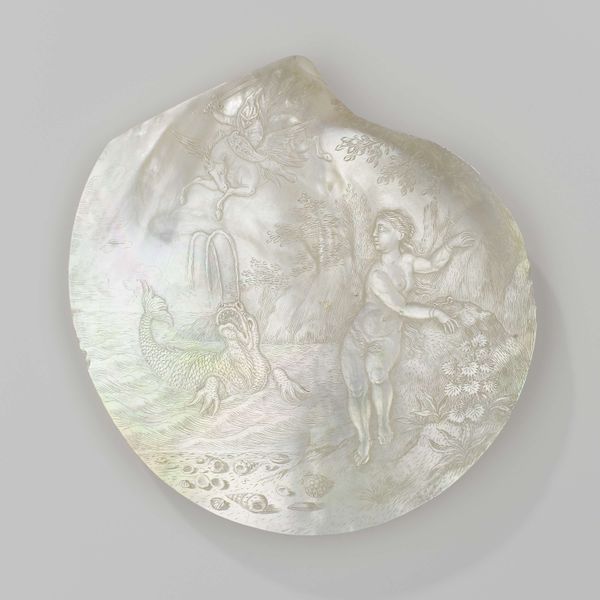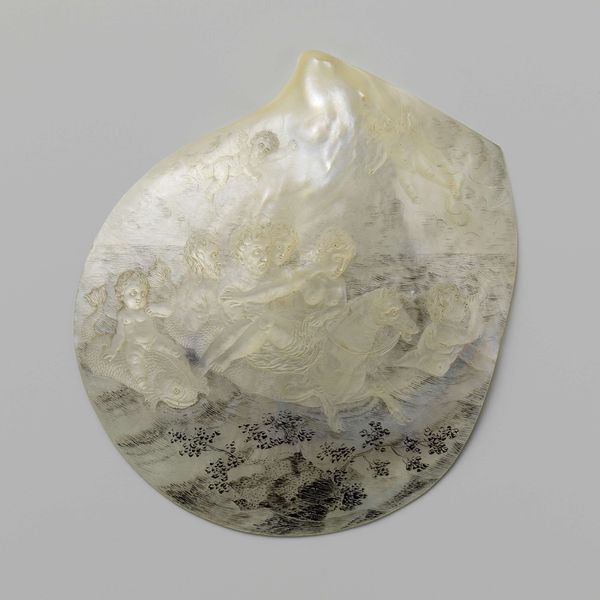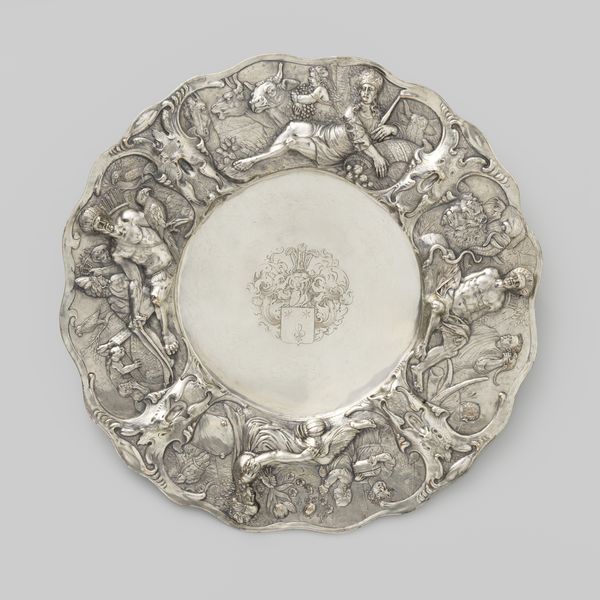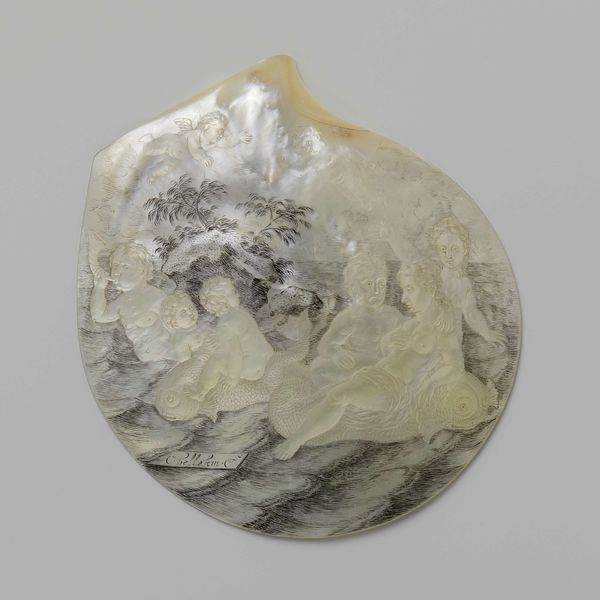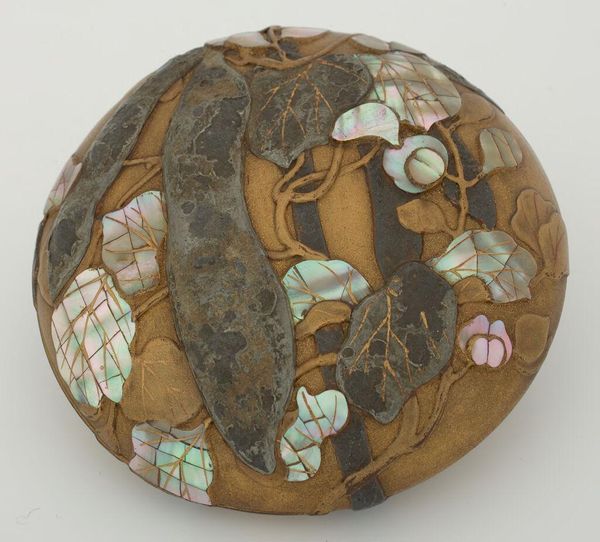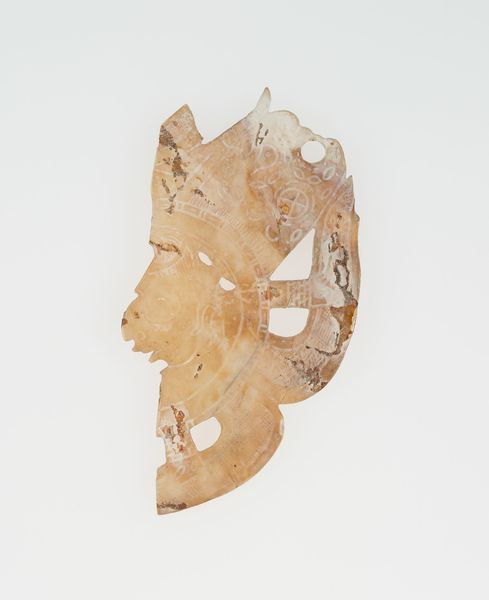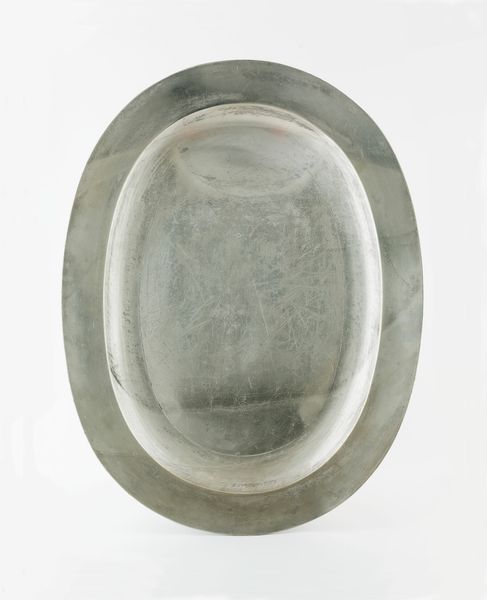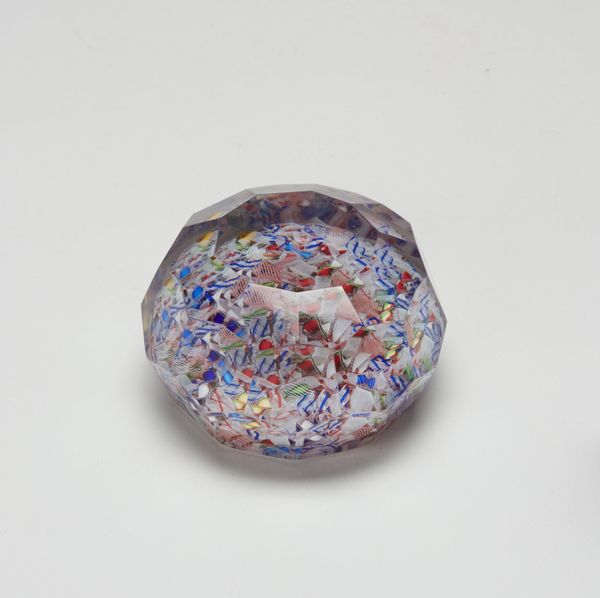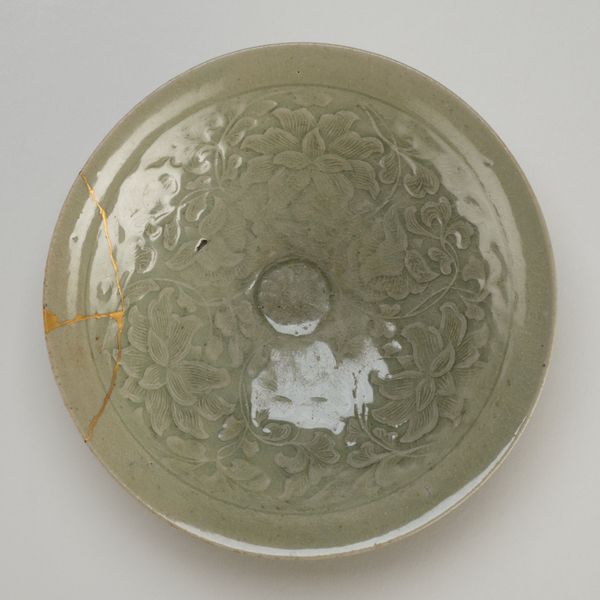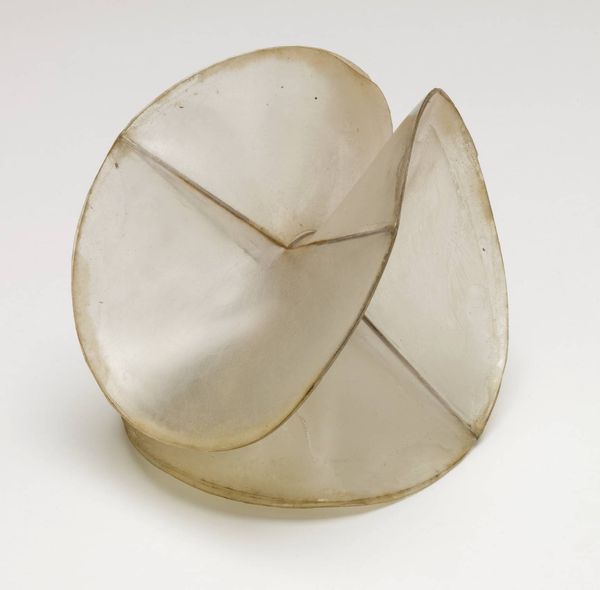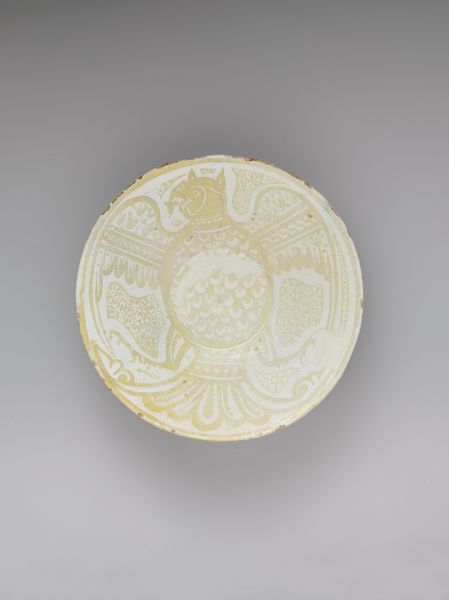
carving, sculpture, ivory
#
carving
#
baroque
#
sculpture
#
ivory
Dimensions: height 9 cm, width 8 cm, thickness 1 cm
Copyright: Rijks Museum: Open Domain
Editor: So, this intriguing piece is "Two Carved Shells," dating back to sometime between 1670 and 1700, by Cornelis Bellekin. The material is listed as ivory. What strikes me is the incredible detail carved into this delicate surface. What figures are depicted and what stories do they tell? Curator: This piece certainly draws on rich visual traditions. We see a complex tableau of figures associated with the sea and fertility: Neptune with a fish tail extending his hand toward a woman followed by a cherubic child. This resonates with baroque theatricality while evoking powerful associations. Editor: It looks almost like a scene from a play. What emotions were they meant to evoke from their viewers? Curator: Consider the context of the period; during the Baroque era, symbols of power and the natural world were pervasive in art. Here, Bellekin is invoking the power of classical mythology – Neptune as ruler of the sea. It’s not merely about depicting a story, it's about harnessing the psychological weight of these well-known symbols. How do these figures engage *your* emotions? Editor: Well, Neptune's gesture suggests either a greeting or command. His presence next to a woman with child really stirs notions about nature. But do those notions come together in a cohesive narrative? Curator: It isn't so much a narrative as an accumulation of archetypes. The woman’s reaching gesture also has visual connections with "Venus Anadyomene", which is commonly read as a fertility symbol that brings a narrative context. Bellekin, drawing from a wellspring of cultural memory, created a conversation piece laden with symbolism for sophisticated viewers of his time. Editor: I didn’t realize it was so full of symbolism. Thanks, I see it completely differently now. Curator: Indeed, a seemingly decorative object is now a complex embodiment of an epoch.
Comments
rijksmuseum over 2 years ago
⋮
Bellekin transformed nature into art, producing objects perfectly in keeping with the 17th-century concept of a collection of rarities. VOC ships brought back oyster shells from the Indian Ocean, which Bellekin carved with scenes from Greek mythology in low relief: Perseus on his winged horse rescuing Andromeda, and the nymph Scylla reaching out to the sea god Glaucus.
Join the conversation
Join millions of artists and users on Artera today and experience the ultimate creative platform.
